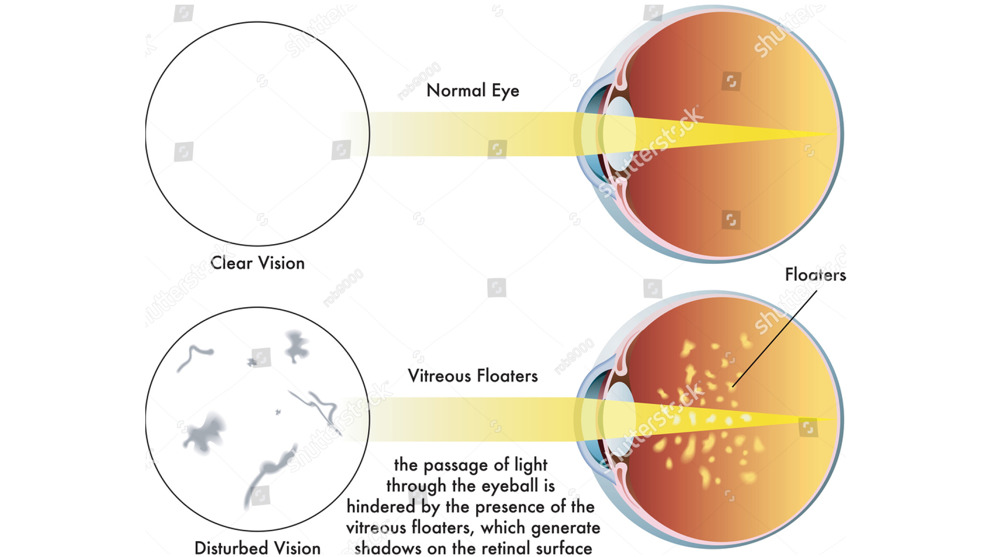Vitreous Floaters
Mobile opacities in the vision (often referred to as “Floaters”) are extremely common and all patients will experience them to some degree at some point in their lives.

The vitreous gel at the back of the eye changes with age. In infancy and childhood, it is more of a gel structure, but with age, it liquefies and small pockets of fluid appear within the gel.
These form tiny opacities within the vitreous that cast shadows on the retina, particularly in brighter light, and these are perceived as floaters.
Normally the brain learns to adapt to the floaters and they become less noticeable with time.
A sudden increase in the appearance of floaters can signify what is known as a vitreous detachment. This is where the vitreous gel pulls away from the retina at the back of the eye. This is a normal phenomenon of ageing, but in a very small number of people, this can be associated with a small break or tear in the retina. This can, if untreated, lead to a retinal detachment. It is important, that if you do notice such sudden increase in floaters, that you contact your optician urgently, who will be able to check your eyes and refer on to specialist care, if needed.
Very occasionally, the symptoms of vitreous floaters are so intrusive and visually disabling, that surgical removal can be considered. Your surgeon will be able to discuss the process for this, should the need arise. The surgery would involve an operation called a vitrectomy and is normally performed under local anaesthetic as a daycase.
Less commonly the appearance of floaters in the vision can be due to a bleed at the back of the eye, or possibly inflammation. Again, the occurrence of this within the eye is likely to be associated with new or increased floaters and should prompt a check at your optician.





